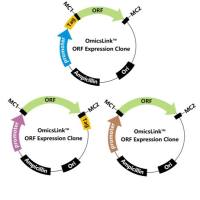Real-Time Quantitative (RQ-)PCR Approach to Quantify the Contribution of Proliferation to B Lymphocyte Homeostasis
互联网
585
The cells of the adaptive immune system, B and T lymphocytes, each generate a unique antigen receptor through V(D)J recombination of their immunoglobulin (Ig) and T-cell receptor (TCR) loci, respectively. Such rearrangements join coding elements to form a coding joint and delete the intervening DNA as circular excision products containing the signal joint. These excision circles are relatively stable structures that cannot replicate and have no function in the cell. Since the coding joint in the genome is replicated with each cell division, the ratio between coding joints and signal joints in a population of B cells can be used as a measure for proliferation. This chapter describes a real-time quantitative polymerase chain reaction (RQ-PCR)-based approach to quantify proliferation through calculating the ratio between coding joints and signal joints of the frequently occurring kappa-deleting rearrangements in the IGK light chain loci in man and mouse. The approach is useful to study the contribution of proliferation to B-cell homeostasis in health and disease.









